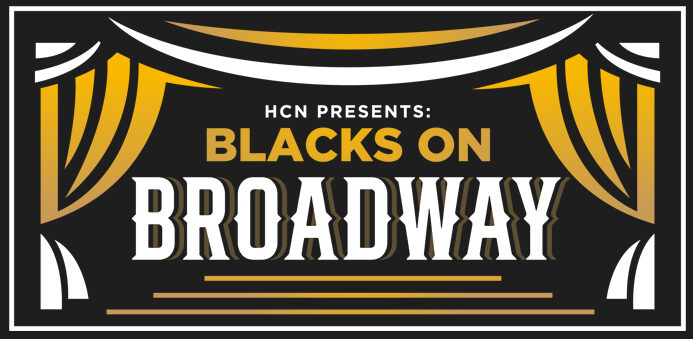Tracing Our ‘Routes’: A Brief Historical Timeline of Blacks in New York
Categories: Articles,
We are exploring our NYC “routes” in honor of Black History Month and many little-known facts about our culture.
How did Blacks end up building not just Wall Street, but some of the best-known buildings still in use downtown? Historical records show the Dutch India Company brought 11 male African slaves to New Amsterdam in 1625. To keep “intruders” out, the slaves were ordered to build a fort – a wall – and that’s how Wall Street got its name!
The feared “intruders,” namely the British, took full possession in 1664, renaming the island New York. Today, you will find the African Burial Ground National Monument in the financial district. It honors the 15,000 to 20,000 slaves and free Blacks buried there during the 17th and 18th centuries. Historians say the English built the Negro Burial Ground in 1690 because Blacks, free or slave, were not allowed to bury their dead in the city’s main cemetery. Although the cemetery was known to a few historians, it wasn’t until the builders broke ground for the Ted Weiss Federal Building in 1991 that hundreds of graves were discovered.
In the 1700s, Blacks were involved in constructing not only Federal Hall but many of the buildings at the southern tip of the island and further up. The yellow fever epidemic killed hundreds of slaves. As 42% of households owned slaves, more were needed, and the formal slave market was established at Wall Street and the East River in 1711. By 1780, New York City’s Black population had reached 10,000. In 1799, the Gradual Emancipation law was passed but did not apply to already enslaved people. As the city grew, Blacks migrated uptown, searching for more opportunities and fresher air.
Walking through Central Park, you may see a sign reading “Discover Seneca Village” and wonder about the Village’s origin. Located between 82nd and 89th Streets and Seventh and Eighth Avenues, on approximately five acres of land, a village by that name thrived. In 1825, farmers John and Elizabeth Whitehead divided their land into 200 lots and sold the first three to shoe shiner Andrew Williams for $125. Store clerk Epiphany Davis bought 12 lots for $578, and the AME Zion Church purchased another six. The birth of a new community! In 1827, slavery was officially abolished in New York, and the Village continued to grow. But in 1853, the New York State legislature chose 750 acres of land in New York City to be the site of a new park north of the developed downtown, running from 59th to 106th Streets. Unfortunately, that was the death knell for Seneca Village when the villagers were forced to leave in 1857, losing their property and homes through eminent domain. Every structure was torn down to make way for the construction of Central Park. Seneca Village disappeared and was forgotten. In the 1990s, historians “rediscovered” the village. To learn more, visit https://www.centralparknyc.org/articles/seneca-village and learn how four generations of the Williams family were found.
New York’s subsequent growth included Blacks continuing to move uptown. Harlem, a lush, beautiful village, had been settled by the Dutch in 1659 but had changed greatly by the 19th century. Harlem was annexed into New York City in 1873, and from 1878-1881, railroad construction reached 129th Street. By 1886, trains were running above 129th Street. Harlem’s population was still primarily white and affluent, with a small population of Blacks. A sudden housing boom with hundreds of new buildings attracted NYC Blacks, Southern Blacks, Irish, German, Italian, Jewish, and other immigrants to move in.
Between 1910-1940, the Great Migration took place. Southern Blacks were leaving Jim Crow segregation laws behind and arrived in New York City by the thousands. Harlem welcomed them.
From the 1920s to the 1930s, the Harlem Renaissance was in full swing as the area became the center for intellectual discourse and cultural revivals of African American music, dance, art, fashion, literature, theater, politics, and poetry.
The Apollo Theater was open, and so was The Cotton Club. The Savoy opened in 1927, and the integrated ballroom with two bands belted out tunes nightly. Greats like Louis Armstrong, Duke Ellington, Cab Calloway, and others performed there regularly. Bessie Smith and Fats Waller were also popular. Harlem was moving and grooving into the 1940s. The Harlem Renaissance opened the way for the civil rights movement and the Black Arts movement, empowering the community from the 1950s through the 1970s.
Contemporary Harlem remains vibrant, educational, and welcoming. Walking through Harlem today, you might come across the Harriet Tubman Memorial or see the Frederick Douglass Sculpture and Water Wall. Stroll by the Adam Clayton Powell Memorial statue, “Higher Ground,” at 125th Street; it was built in honor of the first Black Congressman from New York.
The Apollo is still a mecca known for its vibrant music scene. Do you love jazz? Head to the National Jazz Museum! Black History. The Schomburg Center for Research in Black Culture began with Afro-Puerto Rican Arturo Alfonso Schomburg’s personal collection related to Black history and the African diaspora. You can find whatever you’re interested in when you visit Harlem. From its African colonial roots to Harlem’s role in New York, Black history beckons you to explore.






